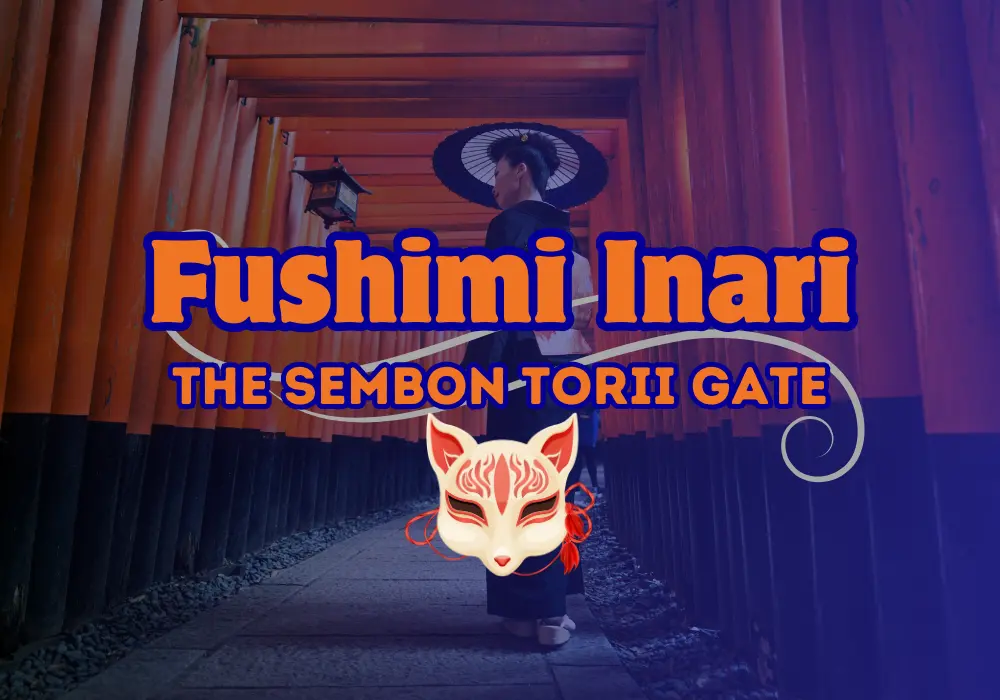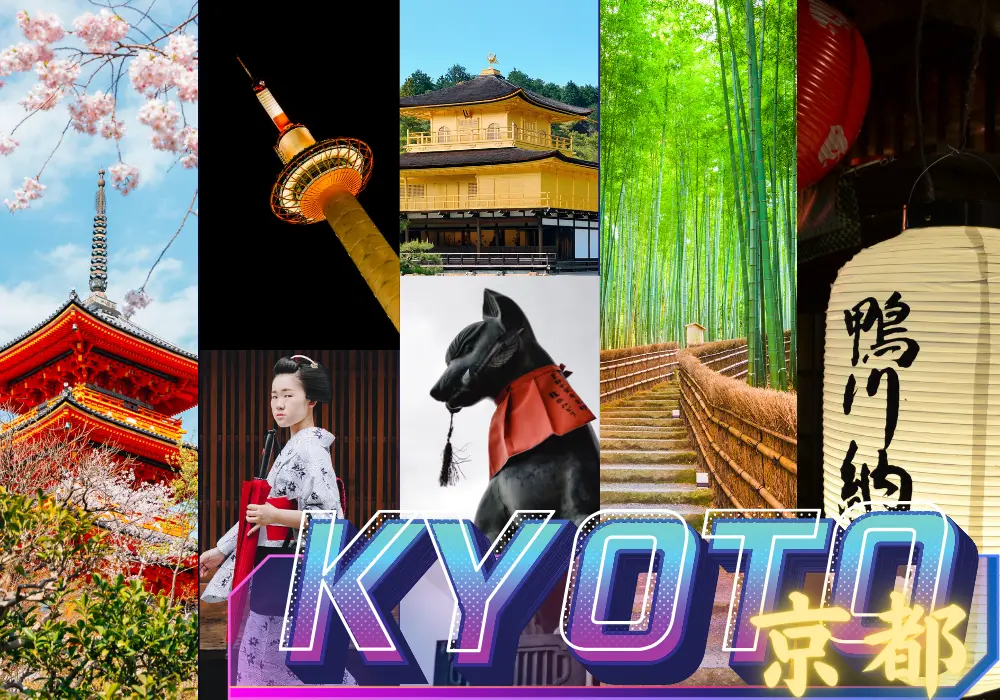Fushimi Inari Taisha(Fushimiinari) is an iconic tourist spot in Kyoto, having been ranked as the top destination for foreign visitors for five consecutive years.
The countless red torii gates create a landscape that feels like stepping into another world. Known for its association with business prosperity and bountiful harvests, the shrine is deeply rooted in history and culture. This guide will provide a concise introduction to the highlights, history, and recommended points of interest at Fushimi Inari Taisha. Whether you’re a first-time visitor or a returning traveler, this guide will help you explore and appreciate this remarkable site.
Fushimi Inari Taisha (shrine)
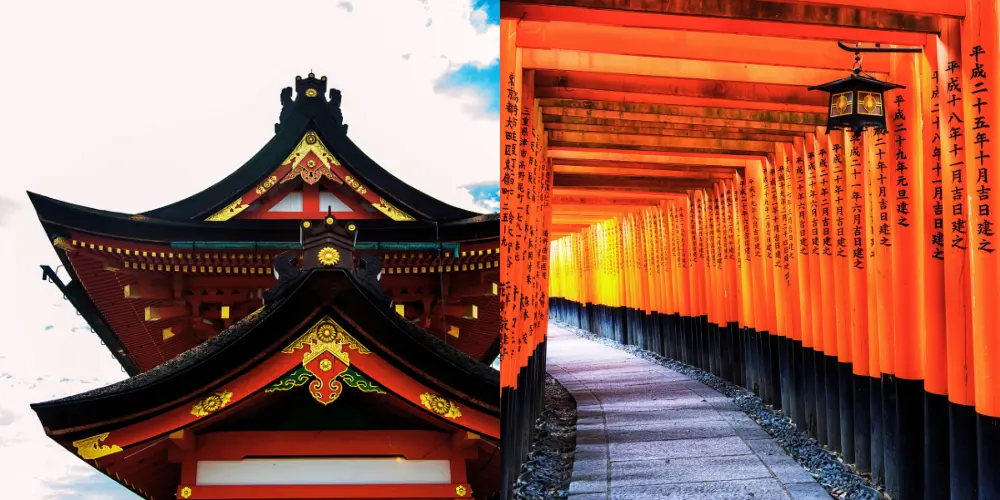
You won’t be disappointed
Once you pass the busyness of the front entrance and first section of the trail it opens up to a beautiful hike. There are countless areas off the main path where you can pause within a picturesque mossy grove of shrines. The views along the path to the mountain are stunning. Budget 2 hours for the whole loop and you won’t be disappointed.
Night was amazing
Went here at night and it was amazing!! I definitely recommend walking around here at night because it is extremely peaceful and much less crowded. It is definitely harder to take nice pictures but aside from that, it was worth going at night! There is also a chance you get to see some boars! I was lucky enough to be able to see a bunch of baby boars while hiking down!
Amazing experience
Amazing experience. We got there by a short train from Kyoto at 4:30pm. The crowds weren’t too busy at all and we got a really lucky by reaching the viewpoint and watching the sunset over Kyoto. Once you walk up the hill there’s always photo opportunities without other people in so do not worry🙂↔️ I recommend it!
From Google Review – Fushimiinari Taisha
| Open Hours | 24 Hours |
| Official Homepage | https://inari.jp/ |
Fushimi Inari Taisha, Kyoto’s most iconic shrine, is renowned for its beauty and historical significance. It is the head shrine of approximately 30,000 Inari shrines across Japan and is beloved by people both domestically and internationally.
When people think of fushimiinari, they picture the thousands of torii gates. The endless rows of red torii gates create a fantastical atmosphere, as if you’ve wandered into another world.

What’s the Inari?
Known affectionately as “Oinari-san,” Inari Okami is the most familiar deity to the Japanese people. Revered as the guardian of bountiful harvests, prosperous business, thriving industries, good fortune, and protection against fire, Inari Okami’s divine virtues are widely respected.
Foxes are considered the messengers of the deity and are worshipped alongside the god.
Fushimi Inari Taisha has long been revered as the shrine of the deity for business prosperity and bountiful harvests, attracting many worshippers. The grounds feature not only the main hall but also numerous smaller shrines and beautiful gardens, each steeped in deep history and culture.
Highlight of Fushimi Inari
Fushimi Inari Taisha, with its beautiful scenery and deep history, continues to captivate many visitors.
The numerous attractions are what visitors look forward to the most. The grand torii tunnel, including the iconic Senbon Torii, the mystical mountain paths, and the expansive grounds dotted with various shrines and altars, are filled with an adventurous charm.
Fshimiinari Romon Gate
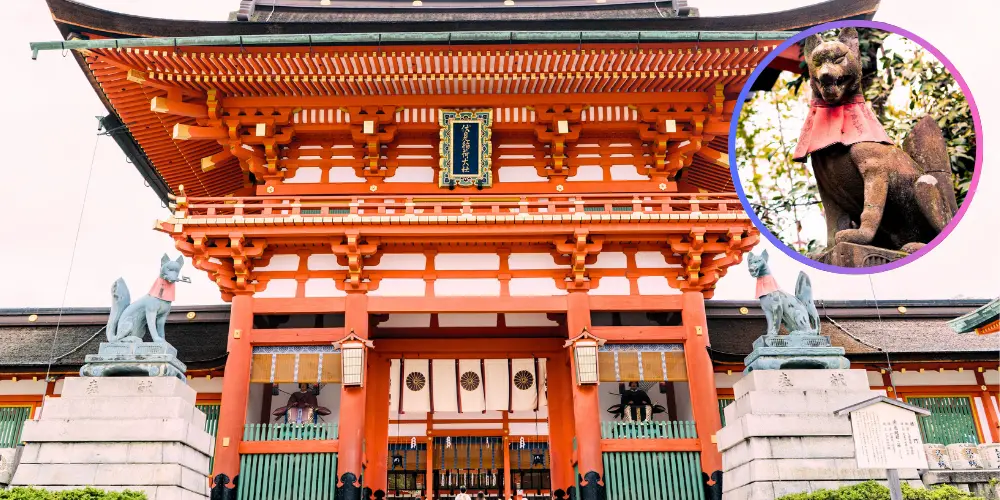
The Romon Gate is a large, roofed gate that serves as the main entrance to Fushimi Inari Taisha. It is said to have been constructed by Toyotomi Hideyoshi (the lord of Osaka Castle) and, along with the South and North Corridors, is designated as an Important Cultural Property of Japan.
In spring, the cherry blossoms surrounding the gate enhance the shrine’s beauty. The contrast between the vermilion gate and the pale pink cherry blossoms is truly a sight to behold.
The Romon Gate is designated as an Important Cultural Property of Japan.
Fushimiinari Gehaiden
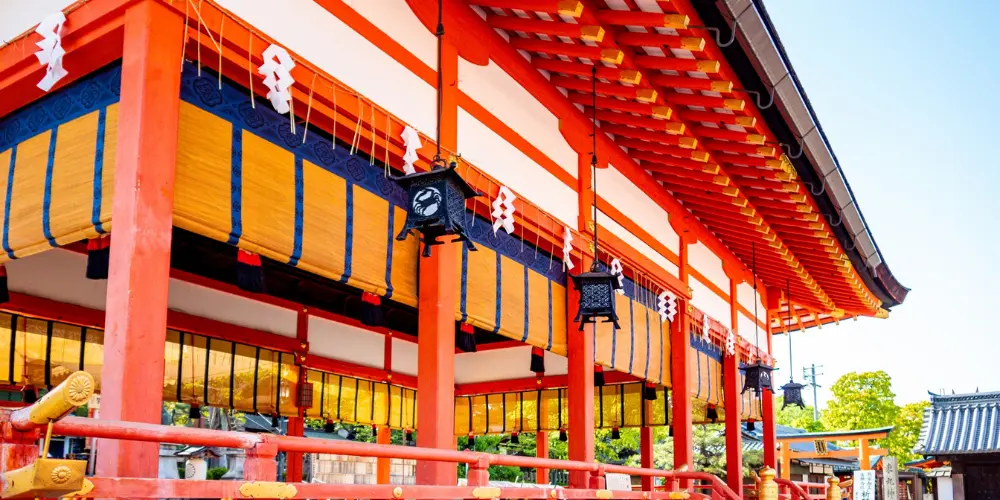
The Gehaiden is a place where worshippers pray to the gods.
Fushimi Inari Taisha’s Gehaiden features vermilion pillars and a beautiful roof, making it an impressive structure. It is designed to allow worshippers to approach the sacred area without entering the main hall.
Here, visitors can offer their prayers and express their gratitude. The Gehaiden is also a venue for Kagura dances and other religious ceremonies, allowing visitors to experience the solemn atmosphere of fushimiinari.
The Main Shrine of Fushimiinari
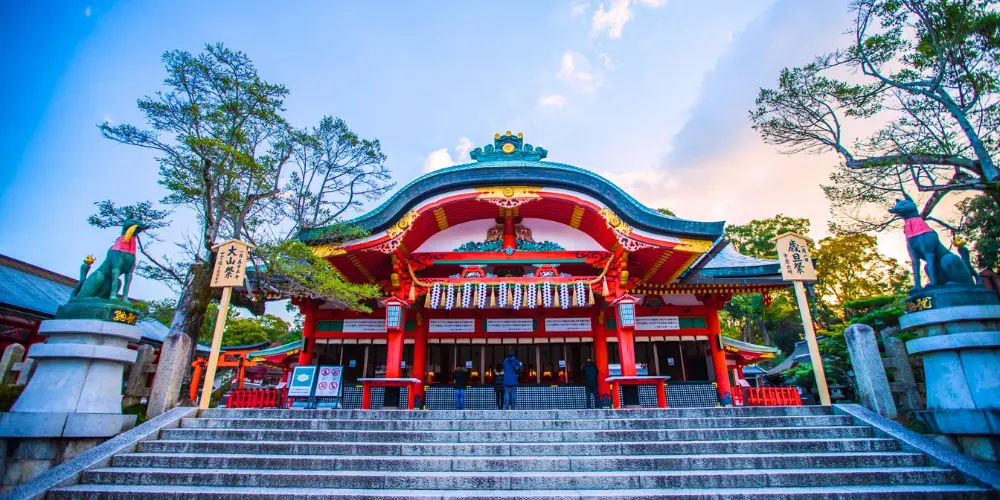
The Main Shrine is the most sacred place at Fushimi Inari Taisha, where Inari Okami is enshrined. Rebuilt by Toyotomi Hideyoshi, this hall is renowned for its historical significance and beautiful architecture.
Designated as an Important Cultural Property of Japan, it showcases traditional Japanese architectural techniques and aesthetics to visitors. Worshippers gather in front of the Main Hall to offer their heartfelt prayers and gratitude.
Surrounding the Main Shrine are smaller shrines and altars, each with its own unique history and faith, adding to the rich cultural tapestry of fushimiinari.
Sembon Torii Gate
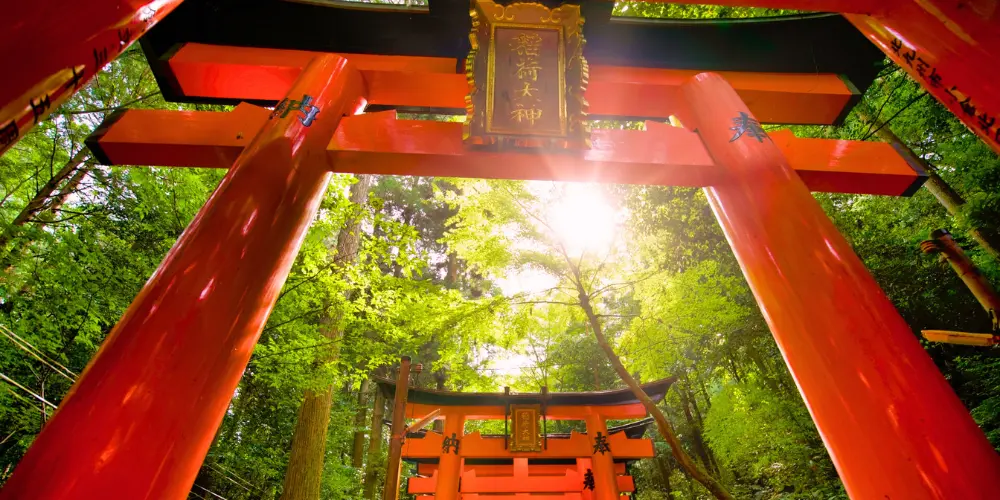
Beautiful place
It was a beautiful place. So many Tori gates. We went pretty late around 5pm. The place still had quite a lot of people but worth ever since gone step. The hike to the top is worth it and beautiful. The sunset was pretty amazing as well. At the beginning there are a lot of food places if you get hungry. They are very tasteful.
The most picturesque places
One of the most picturesque places in all of Japan. If you’re planning to hike up the mountain, be prepared for a 1 hour+ hike up and down. The real hike starts when you see the forest turning dark. There are many crossroads that can be easily manageable by reading the maps. For photo ops, try to reach the higher parts of the mountain where the crowds have thinned out. There are lots of places to catch a breather in between. Overall it was a great nature hike.
Special place for sure
One of those things you just have to do in Kyoto with the million others doing the same! It’s a massive place and if you keep going up the hill you’ll eventually find a moment where you can get a photo without people in it! It’s a special place for sure.
From Google Review – Fushimi Inari Taisha Sembon Torii (Thousand Torii Gates)
Senbon Torii is an iconic sight at Fushimi Inari Taisha and a popular spot for tourists from around the world.
Senbon Torii refers to the countless red torii gates that line the shrine’s pathways. These gates were donated as tokens of gratitude for fulfilled wishes or to pray for further prosperity. While Senbon Torii is said to consist of around 800 gates, their sheer number is overwhelming. Additionally, the entire Mount Inari is adorned with approximately 10,000 torii gates, a sight that leaves visitors in awe.
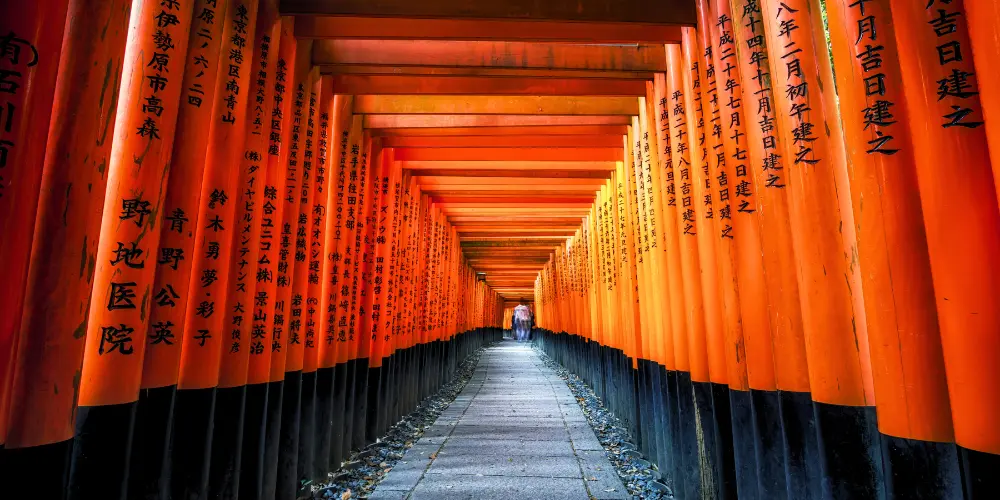
Walking through this tunnel of gates feels like stepping into another world, evoking a mystical atmosphere.
Senbon Torii not only symbolizes the charm of Fushimi Inari Taisha but also embodies the faith and hopes of many people. As such, visitors deepen their feelings of prayer and gratitude in this special space.
Omokaru Stone at Fushimiinari – Test Your Luck
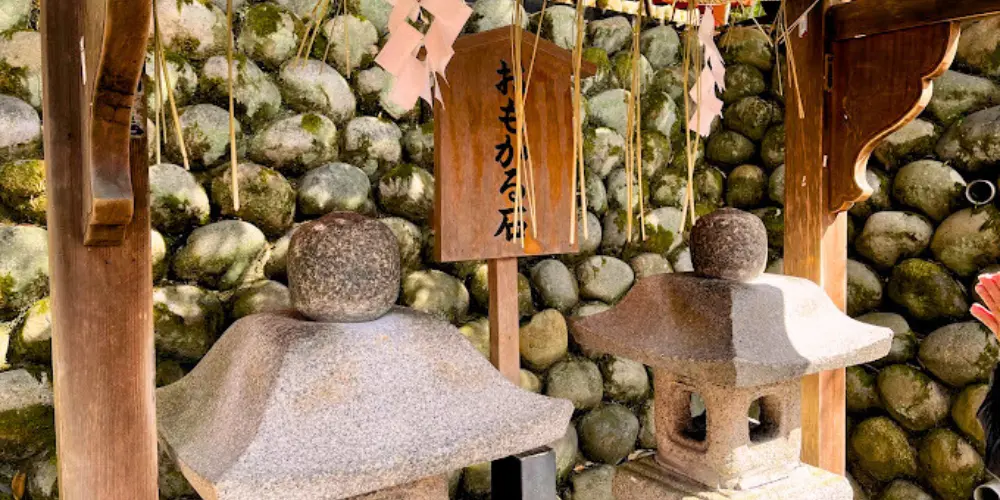
Fushimi Inari Taisha is home to many fascinating spots, but one of the most popular is the “Omokaru Stone.” Located near the main hall at the Oku-no-sha shrine, this stone offers a unique way to see if your wishes and desires will come true.
Visitors hold a wish in their hearts as they lift the stone. If the stone feels lighter than expected, it is said that the wish will come true. Conversely, if it feels heavier, it means that the wish may take more time to be fulfilled. This experience with the Omokaru Stone is very popular among worshippers and is well worth trying.
This simple fortune-telling ritual, like many other attractions at Fushimi Inari Taisha, allows visitors to experience the mystical charm of the shrine. When you visit fushimiinari, be sure to lift the Omokaru Stone and experience the weight of your wishes.
Fushimiinari Yotsutsuji
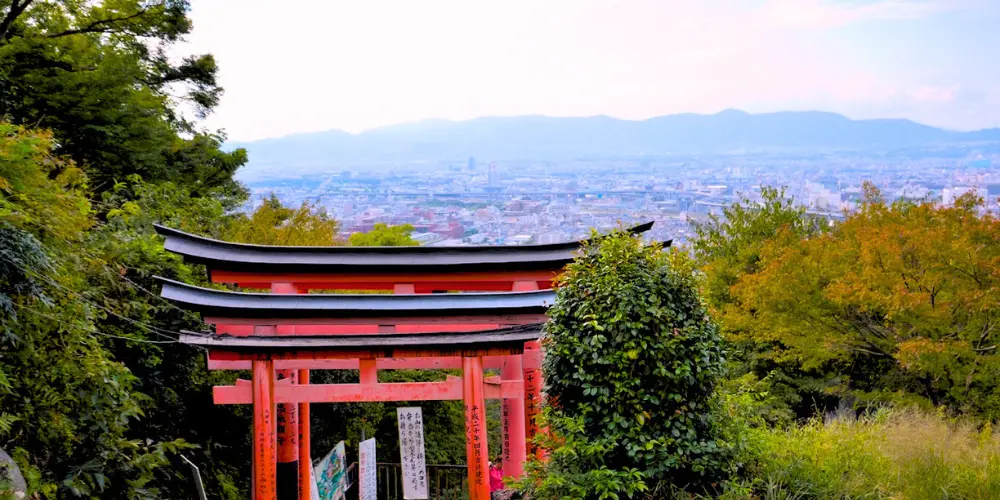
Yotsutsuji is an important spot located at the midpoint of the hiking route at Fushimi Inari Taisha.
It is a place where several pathways intersect, and there are teahouses where visitors can rest and have a meal. From Yotsutsuji, you can enjoy a panoramic view of Kyoto city, making it a popular rest stop for many worshippers.
It serves as a base for those who wish to continue their pilgrimage to the summit of Mount Inari. If you have the stamina and time, taking a break at Yotsutsuji before heading to the summit is highly recommended.
Fushimiinari: The Entire Mount Inari is a Site of Worship
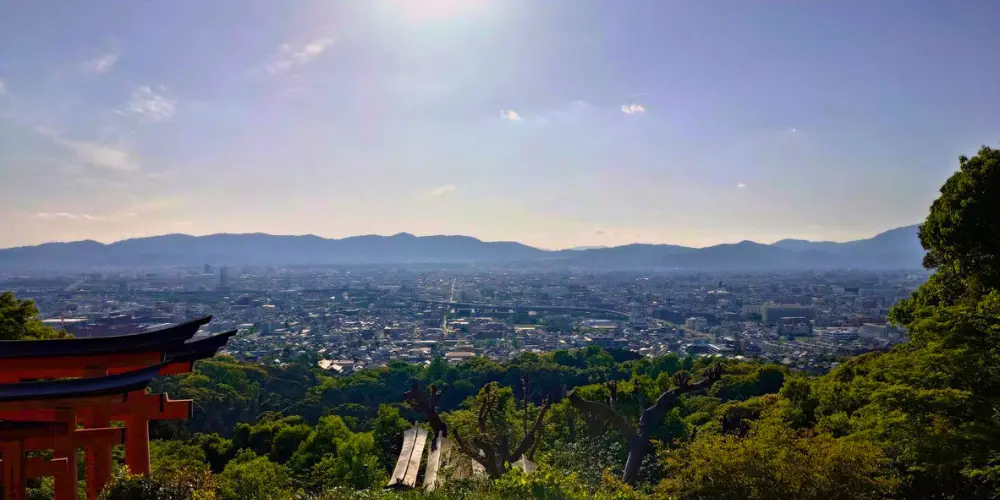
While many visitors turn back at the Oku-no-sha shrine after paying their respects, the grounds of Fushimi Inari Taisha are actually quite extensive.
The shrine complex covers Mount Inari, which has an elevation of about 233 meters and a circumference of approximately 4 kilometers, taking about 2 hours to walk around.
Along the way, there are numerous sacred mounds and points of interest that offer blessings. To truly understand Fushimi Inari Taisha, one should experience the mountain pilgrimage (oyamameguri).
If you have the time and stamina, we highly recommend the hike. Be sure to wear comfortable walking shoes, such as sneakers, and bring drinks like tea or water for hydration.
Lights Up Event at Fushimiinari
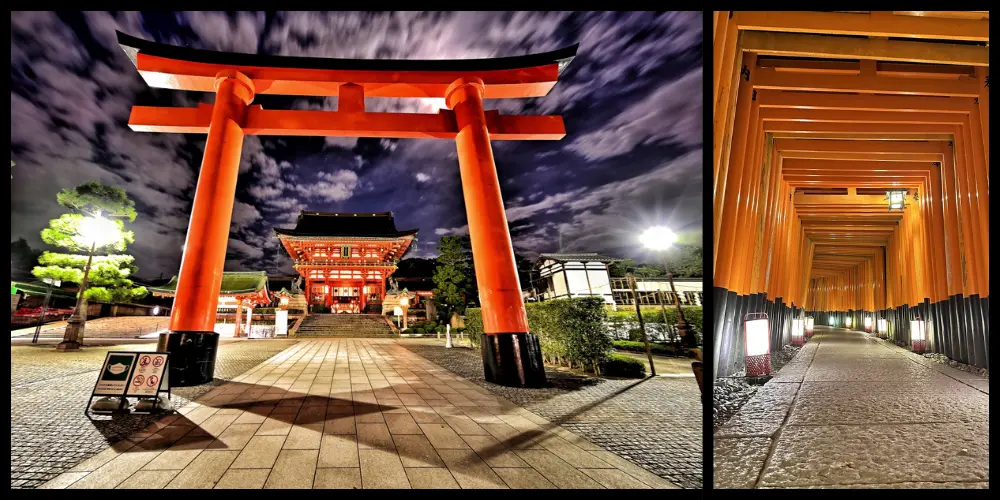
Light-up events at Fushimi Inari Taisha occur several times a year, with autumn being particularly popular. The shrine is often illuminated during the fall foliage season, but it doesn’t always coincide exactly with the peak foliage period, so it’s important to check in advance.
We recommend checking the specific dates and times of the light-up events on the official website or tourism information sites. These events usually take place from evening to night, typically starting after sunset and lasting for a few hours.
Access to Fushimiinari Taisha
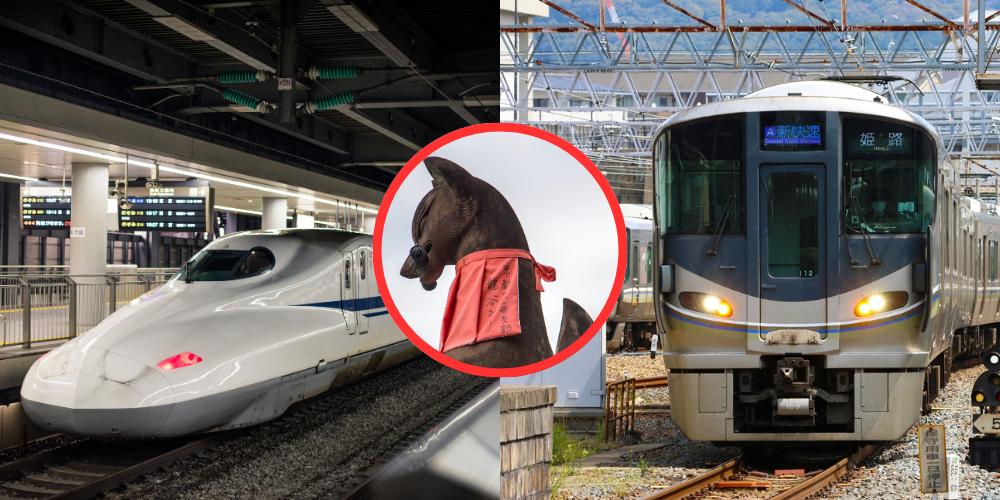
Access from Tokyo
The most convenient way to reach Fushimi Inari Taisha from Tokyo is by Shinkansen.
Take the Tokaido Shinkansen from Tokyo Station to Kyoto Station, which takes about 2.5 hours. Once you arrive at Kyoto Station, transfer to the JR Nara Line and get off at “Inari Station.” From Inari Station, it is about a 5-minute walk to Fushimi Inari Taisha.
Access from Osaka
Reaching Fushimi Inari Taisha from Osaka is also straightforward.
From Osaka Station, take the JR Kyoto Line to Kyoto Station, which takes about 30 minutes, or take the Keihan Main Line to “Fushimi Inari Station,” which takes about 40 minutes. From Fushimi Inari Station, it is about a 10-minute walk to the shrine.
If you use the JR line, transfer to the JR Nara Line at Kyoto Station, get off at “Inari Station,” and walk about 5 minutes to the shrine.

Tokyo to Osaka: How to Get There?
We’ll introduce you to the access methods and key points of traveling from Tokyo to Osaka.
